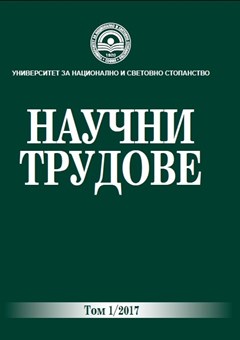Извънбрачната раждаемост в Р. България – тенденции и териториални различия през периода 1995-2015 г.
Extramarital Birth-Rate in the Republic Of Bulgaria – Trends and Territorial Differences during the 1995-2015 Period
Author(s): Todor KaloyanovSubject(s): General Reference Works, Applied Sociology, Family and social welfare, Demography and human biology
Published by: Университет за национално и световно стопанство (УНСС)
Keywords: birth-rate; natality; regional differences
Summary/Abstract: Since 1990 our country sharply increase the proportion of families who are not formally married. As a result of this rapid increase and the proportion of children who registered the statistics as "non-marital".The purpose of this article is to analyze regional differences in areas in the level of non-marital births and dynamics of these differences in our country during the period 1995-2015.To achieve the above objective solve several tasks: Comparative analysis of the dynamics of changes in the size of the share of non-marital births between Bulgaria and some European countries. Study the dynamics of non-marital births in Bulgaria - total and for regions. Exploring the differences between regions in the level of non-marital births in a given year. The basis of the methodology is the statistical approach. Used as elementary statistical measurements for studying the development of time series - absolute growth, growth rate, integral coefficient of structural differences and stronger methods such as regression and correlation analysis. The results of the survey show very rapid adoption of the model of cohabitation in Bulgaria. Bulgaria quickly, just 20 years from 1990 to 2010, overtook countries like Sweden and France in the next five years even overtake them in terms of the proportion of children born out of wedlock. The majority of the population of our country adopts new standards and model of coexistence. In all areas the proportion of children born out of wedlock is increasing. There is reason to accept as true the hypothesis that the concentration of the Muslim population in some regions It affects the dynamics and the level of non-marital births. An important result of the study is that in recent years have seen a slowdown in growth. Most likely reach the threshold of non-marital births, about who will keep her level. It is not excluded in the future process of increasing the share of non-marital births gradually "die down" due to depletion of its potential. Possibly even a return to lower shares, which was established in four regions.
Journal: Научни трудове на УНСС
- Issue Year: 1/2017
- Issue No: 1
- Page Range: 11-33
- Page Count: 22
- Language: Bulgarian

